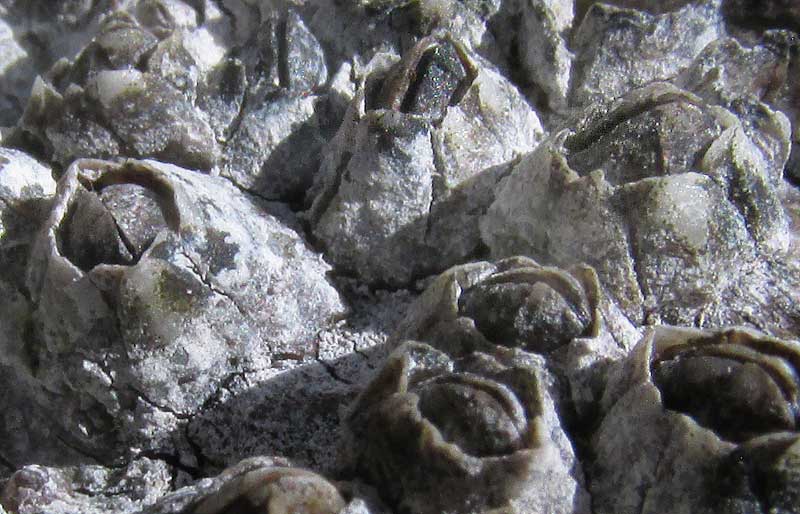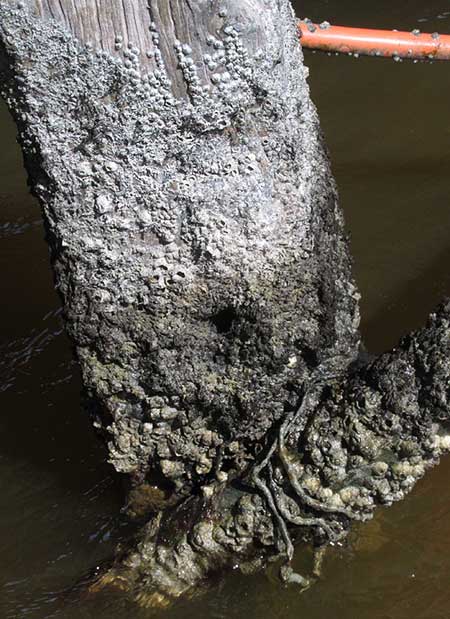Excerpts from Jim Conrad's
Naturalist Newsletter

from the February 15, 2015 Newsletter issued from Río Lagartos, on the Yucatan Peninsula's northern coast (~N21.60°, ~W88.16°), Yucatán state, MÉXICO
BAY BARNACLE
On the east side of Río Lagartos a little pier extends into the estuary's waters and, as is normal for pier pilings, the pilings' bottoms are heavily encrusted with barnacles, as shown below:

A close-up showing a cluster of individual barnacles not over ¼-inch high (6mm) is shown at the top of this page.
We've already admired the large, white barnacle species common on roots of the Red Mangrove along the estuary's sides, the Ivory Barnacle, AMPHIBALANUS EBURNEUS, shown at www.backyardnature.net/mexnat/barnacle.htm.
The barnacles on our pier pilings average much smaller than those and they're not as white. Add that to the information that I can find only three barnacle species listed as common along the Yucatan coast, and that one of those species is our big Ivory Barnacle, a second has conspicuously striated or lined plates unlike our piling species, and that the third species is a much smaller one not exceeding a height of ¼-inch... and one suspects that this is that third, smaller species, the Bay Barnacle, AMPHIBALANUS IMPROVISUS. This is a clumsy way to identify a barnacle, but since our pictures appear to match those of that species on the Internet and other printed details appear to sync, that's how we'll file them here.
Barnacles are crustaceans. All we see in our pictures are six rock-hard, fused plates forming a crater inside which two other plates close atop the crustacean creature lying protected inside the crater. The creature awaits the tide to raise waters to its level, so it can feed. When the water returns, the two plates inside the crater will crack open and six pairs of comb-like legs will extend into the surrounding water, rapidly waving back and forth, filtering from the water tiny plankton and other microscopic food particles that then will be brought into the crater, and eaten.
Bay Barnacles are found to a depth of about 20ft (6m) in temperate and tropical brackish and marine waters practically worldwide. They grow on a wide variety of surfaces, from rocks and shells of crabs and mollusks, and certain seaweeds, to ships, boats, harbor structures, and fishing gear. They're thought to be a native American species that has traveled to other parts of the world on and in ships.
As with Ivory Barnacles, Bay Barnacles are hermaphrodites who pass sperm between one another by way of long penises. Fertilized eggs hatch into larvae which drift out of the mother barnacle in water currents. After two to five weeks the larvae change into forms that move about until they find a suitable surface on which to settle, where they cement themselves to the substrate and metamorphose into juvenile barnacles.